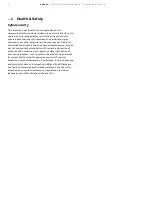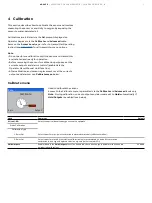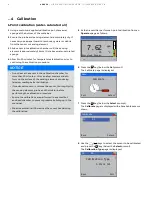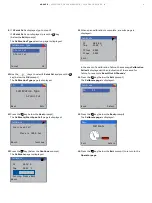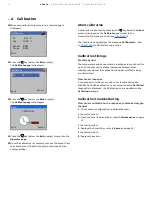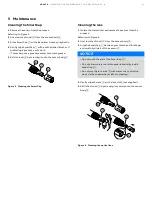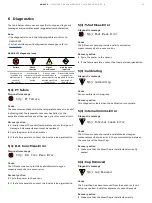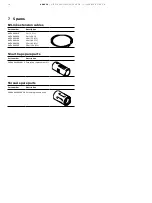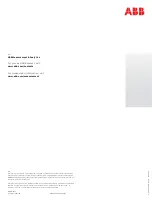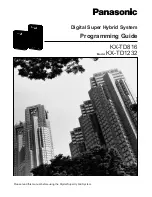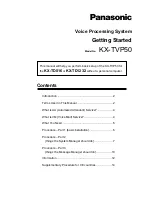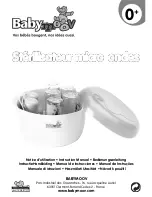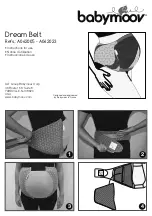
10
A DS 4 20
| D I SS O LV ED OX YG EN SEN S O R | O I/A DS 4 2 0 - EN R E V. B
…4 Calibration
2-Point calibration (100 % and 0 % saturation)
Note .
This calibration procedure requires 60 mL (2.0 US fl oz)
of fresh sodium sulfite solution.
1
Using a customer-supplied calibration pot, place a wetted
sponge at the bottom of the container.
2
Ensure the probe and sensing element are completely dry. If
necessary use a paper towel to remove any water or debris
from the probe or sensing element.
3
Slide probe into calibration chamber until the sensing
element is approximately 25 mm (1 in) above water-saturated
sponge.
4
Allow 5 to 10 minutes for temperature stabilization prior to
continuing the calibration procedure.
NOTICE
• Do not leave the probe in the calibration chamber for
more than 30 minutes – this can allow condensation to
form on the surface of the sensing element, producing
false low readings after calibration.
• If condensation occurs, remove the probe, thoroughly dry
the sensing element, probe and thermistor before
performing the calibration procedure.
• Ensure the calibrations are performed in a vented but
enclosed chamber, to prevent pressure building up in the
container.
• Minimize ambient airflow across the sensor head during
the calibration.
5
At the transmitter perform a 2-point calibration from an
Operator page as follows:
CAL
2014–08–20
10:34:52
7.62
25
°C
ppm
Dissolved Oxygen
6
Press the
key (below the
Cal
prompt).
The Calibrate page is displayed:
Calibrate
Menu
Exit
Select
7
Press the
key (below the
Select
prompt).
The
Calibrate
page is displayed with all available sensors
shown:
Calibrate
S1: DO
Back
Select
8
Use the
/
keys to select the probe to be calibrated and
press the
key (below the
Select
prompt).
The
Calibration Type
page is displayed:
S1: DO
Next
Edit
Calibration Type
2-Point Cal




